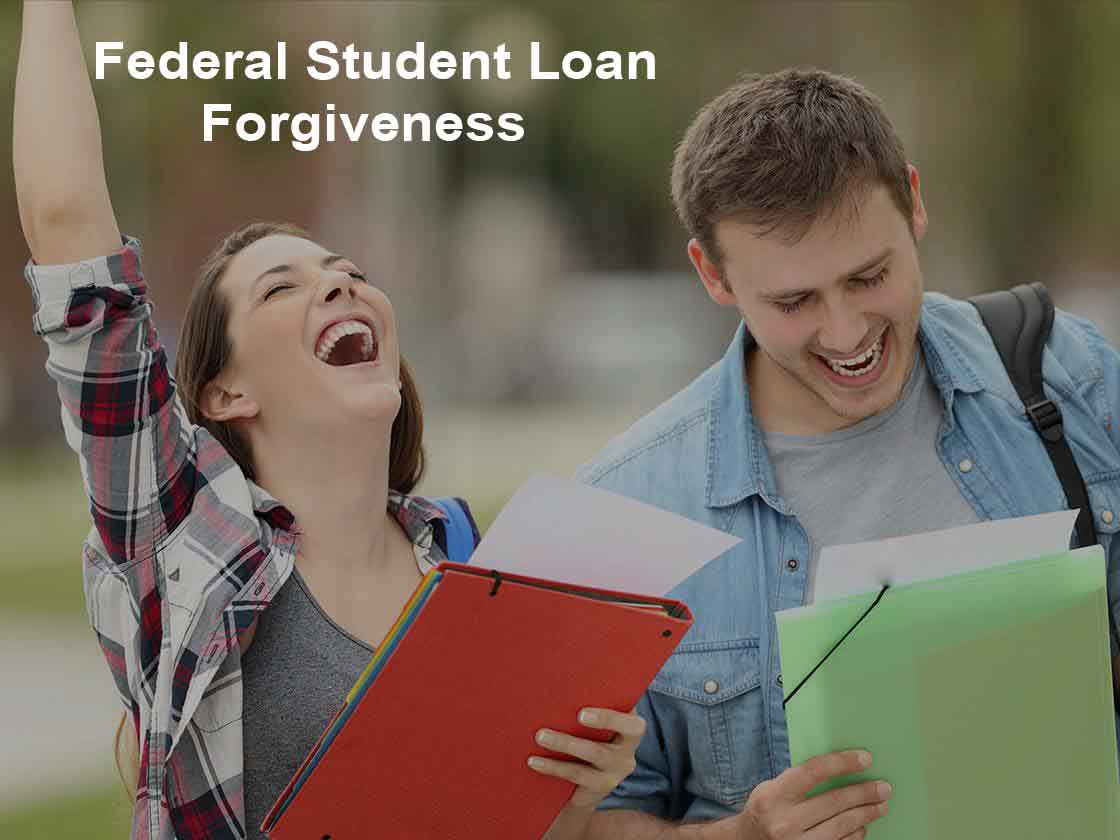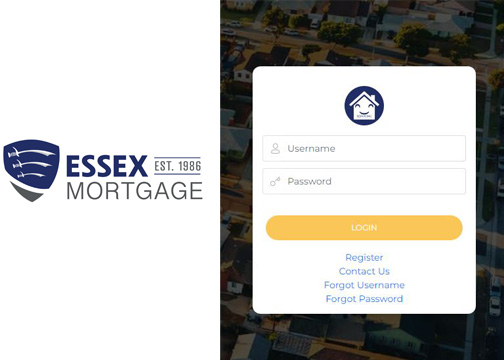Are you wondering how you can get your federal student loan forgiven, canceled, or discharged? Good you are here. There are several types of forgiveness and this can usually happen as a result of some unforeseen circumstances that happened to you like your job and other situations. However, irrespective of your harsh situation, you will still have to qualify to get loan forgiveness.

What is a Federal Student Loan Forgiveness?
Federal Student loan forgiveness means you are no longer required to repay some or all of your loans used to pay for college. This is a program for student or parents who borrow money and could not pay back due some unforeseen circumstances like job and other things. In other words, loan forgiveness part or entire student loan is cancelled. However, this will not just happen at a glance. Borrowers must qualify for forgiven after meeting some requirements before federal government will give you a consideration.
What Does Forgiveness, Cancellation or Discharge mean?
As a matter of fact, many borrowers do not know the difference between forgiveness, cancellation and discharge. Although, they appear the same but they are used differently. However, forgiveness and cancellation means the same thing. Forgiveness or cancellation means a borrower is no longer required to repay their loan due to their job while Discharge is when a borrower is no required to repay their loan due to certain circumstances such as a total or permanent disability or closure of the school where you received your loans.
Types of Federal Student Loan Forgiveness
There are various types of federal student loans forgiveness and they include the following;
Public Servicer Loan Forgiveness
This type of forgiveness is given to the employees of government or non-profit organization. In other words, if you work in a public service you are liable to receive loan forgiveness under the Public Service Loan Forgiveness (PSLF) program.
PSLF forgives the remaining balance on your Direct Loans while working full-time for a qualifying employer after you have made 120 qualifying monthly payments for your loan under a qualifying repayment plan.
To Qualify for PSLF, you must have the following;
- be employed by a U.S. federal, state, local, or tribal government or not-for-profit organization (federal service includes U.S. military service);
- must work full-time for that agency or organization;
- applicant must repay their loans under an income-driven repayment plan
- have Direct Loans (or consolidate other federal student loans into a Direct Loan);
- Must make 120 qualifying payments.
READ ALSO “>>>>>>>>>>>>>>>>>> How to Get Federal Student Loans
How to Get the Best Loans for Students
Teacher Loan Forgiveness
This forgives teachers who teach full-time for straight five complete academic years in a low-income elementary school, secondary school, or educational or educational service agency. Teachers who are eligible for this loan forgiveness can be forgiven up to $17,500 on their Direct Loan or FFEFL program loans.
To Qualify for Teacher Loan Forgiveness, you must have the following;
- The teacher must have had an outstanding balance on Direct Loans or Federal Family Education Loan (FFEL) program loans as of Oct.1, 1998, or on the date that you obtained a Direct Loan or FFEL program loan after Oct.1, 1998.
- You must have been employed as a full-time, highly qualified teacher for five complete and consecutive academic years, and at least one of those years must have been after 1997-98 academic year.
- You must have been employed at an elementary school, secondary school, or educational service agency that serves low-income students (a “low-income school or educational service agency”).
- The loan(s) for which you are seeking forgiveness must have been made before the end of your five academic years of qualifying teaching service.
Closed School Discharge
If your school closes while you are enrolled or soon after you withdraw, you may qualify for discharge of your federal student loan. This is available for Direct Loans, FFEL program loans, and Perkins loans.
To Qualify for Loan Discharge, you must have the following;
- You were enrolled when your school closed
- You were on an approved leave of absence when you school closed
- Your school closed within 120 days after you withdrew, if your loans were first disbursed before July 1, 2020; or
- Your school closed within 180 days after you withdrew, if your loans were first disbursed on or after July 1, 2020.
Perkins Loan Cancellation and Discharge
You can qualify for all or part of your Perkins Loan cancellation based on your job or volunteer service or discharged under specific conditions. This includes Perkins Loan Teacher Cancellation and is available for Federal Perkins Loans.
To Qualify for Perkins Loan Teacher Cancellation, you must have the following;
- You must have served full time in a public or nonprofit elementary or secondary school system
- Must be a teacher in a school serving students from low-income families
- special education teacher, including teachers of infants, toddlers, children, or youth with disabilities; or
- Teacher in the fields of mathematics, science, foreign languages, or bilingual education, or in any other field of expertise determined by a state education agency to have a shortage of qualified teachers in that state.
Total and Permanent Disability Discharge
You may become eligible for total and permanent disability discharge for your federal student loans when you are totally or permanently disabled. This is available borrower with Direct Loans, FFEL program loans and Perkins Loans. You can also get this discharge if you qualify for Teacher Education Assistance for College and Higher Education (TEACH) Grant service obligation.
You can get a discharge under certain conditions which include Bankruptcy, death, School closure, Service-connected disability (veterans), Spouse of a victim of the events of 9/11 and Total and permanent disability.
To Qualify for Total and Permanent Disability Discharge, you must provide a documentation from one of three sources.
- the U.S. Department of Veterans Affairs (VA)
- the Social Security Administration (SSA)
- a physician
Discharge Due to Death
Parent or guardian or student will get discharge for their federal student loans due to death of their student or parent or borrower who took a PLUS loan. This is available for Direct Loans, FFEL program loans and Perkins Loans.
To Qualify for Discharge Due to Death, the family member or other representative will provide acceptable documentation of the borrower’s or parent’s death to the loan servicer.
Discharge in Bankruptcy
Discharge in Bankruptcy usually happens in rare cases. However, student can get their federal student loans discharged after they declare bankruptcy but is not an automatic process. This is available for Direct Loans, FFEL programs loans, and Perkins loans.
Borrower Defense to Repayment
You can qualify for discharge of your federal student loans based on borrower defense to repayment if you took out the loans to attend a school and the school did something or failed to do something related to your loan or the educational services that the loan was intended to pay for. The main requirements to become eligible for a borrower defense to repayment discharge vary depending on when you received your loan.
READ ALSO >>>>>>>>>>>>>>>> Federal Student Loan Login – Login to Manage your Federal Student Aid Account
Best Private Student Loans for International Students
False Certification Discharge
You may qualify for a false certification discharge for your federal student loan if your school falsely certified your eligibility to receive a loan. This loan is available for Direct loans and FFEL program loans.
To Qualify for False Certification Discharge, you must qualify for the three categories of false certification discharge on your Direct Loans and FFEL programs loans which include the following;
- Ability to benefit: This is when the school falsely certified your eligibility to receive the loan based on your ability to benefit from its training, and you didn’t meet the ability-to-benefit student eligibility requirements that were in effect at the time the school determined your eligibility.
- Disqualifying status: The school certified your eligibility to receive the loan, but at the time of the certification, you had a status (physical or mental condition, age, criminal record, or other circumstance) that disqualified you from meeting the legal requirements for employment in your state of residence in the occupation for which the program of study was preparing you.
- Unauthorized signature or unauthorized payment: The school signed your name on the loan application or promissory note without your authorization or the school endorsed your loan check or signed your authorization for electronic funds transfer without your knowledge, and the loan money wasn’t given to you or applied to charges you owed to the school.
Unpaid Refund Discharge
You may qualify for part of your unpaid refund discharge on your federal student loan if you withdrew from school and the school failed to return the loan fund to the loan servicer. It is available for Direct Loans and FFEL programs loans.
Forgery Discharge
You can qualify for forgery discharge if you are a victim of forgery such that the federal student loan(s) was fraudulently made in your name.
To qualify for forgery discharge if an individual or organization (other than a school employee) forged your signature on a loan document or a loan was made in your name as a result of forgery.
How to Apply For Federal Student Loan Forgiveness
If you think your qualify after meeting each requirement for any loan forgiveness type, kindly contact your loan servicer to apply. For those with Perkins Loans and you think you qualify for forgiveness, kindly contact your school or the school that gave you the loan or the loan servicer the school has assigned to you and then apply.
Will I Still Make Loan Payment During the Application Review Period?
During your application review, you are likely to make payments though it depends on the type of forgiveness, cancellation or discharge you are applying for. You can do this by asking your loan servicer to help you find out whether you must continue making payments during the application review period.
What Happens after My Application is approved?
If you qualify for full amount of your loan forgiveness, cancellation, or discharge, you are no longer required to make loan payments. But if you qualify for part amount of your loan forgiveness, you are still responsible for repayment of your remaining balance.
For those who qualify for certain types of loan discharge, they will get a refund of part or entire payment they made on the loan and every negative information records related to delinquency on the loan will be deleted. If the loan was in default, the discharge may erase the default status. If you have no other defaulted loans, you would regain eligibility for federal student aid.
What Happens after My Application is denied?
If your application was denied, you will remain responsible for repayment of your loan according to the the terms of the promissory note that you signed. You can talk to your loan servicer about repayment options if you have a Direct Loan or FFEL Program loan.
If your loan is in default, visit Getting Out of Default to find out how to begin repayment of your loan and your options for getting out of default. If you believe that your application was denied in error, contact your loan servicer for more information.
READ ALSO >>>>>>>>>>>>>>>>>>>> Student Loan Login – Log in to Manage your Student Loans | Federal Student Aid Login
How to Apply for Student Loans: Step by Step Guide
PNC Student Loans Reviews 2022 – Everything You Need to Know
How to Apply for Federal Student Aid (FAFSA) – Fill Out your FAFSA® Form






